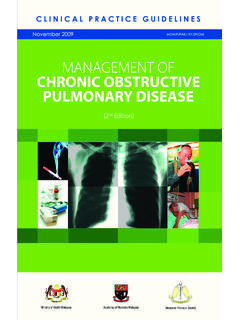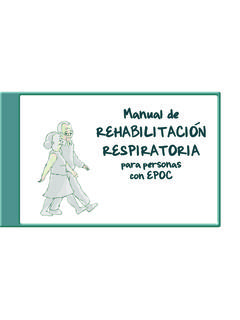Transcription of Assessing fitness to fly - Patient information portal
1 Assessing fitness to flyGuidelines for medical professionals from the Aviation Health Unit,UK Civil Aviation AuthorityIntroductionEvery year, over one billion peopletravel by air and that figure ispredicted to double in the next twodecades. Air travel is a comfortableand safe means of transport and isaccessible to all sectors of thepopulation. The global increase intravel, as well as an increasinglyaged population, means that therewill be a significant increase in olderpassengers and those with illnesswho will wish to travel. Physiology of flightAn understanding of the physicsand physiology of flying and howthis may interact with pathology isuseful in coming to an objectiveconclusion about a passenger sfitness to fly. Contrary to popularbelief, modern aircraft are notpressurised to sea level equivalent,and fly with a cabin altitudebetween 5,000 and 8,000 feet. Thisresults in reduced barometricpressure and a concomitantdecrease in the partial pressure ofalveolar oxygen (PaO2).
2 Few aircraftfly for any significant period of timeat the upper limit of cabin altitude of8,000 feet, where the barometricpressure is approximately 565 mmHg with an alveolar partial pressureof O2of approximately 75mm , due to the shape of theoxy-haemoglobin dissociation curve(Figure 1), this only results in a fall ofoxygen saturation to around 90%.This fall is well tolerated by mosthealthy travellers and iscompensated by the normalphysiological response. However,this decrease in saturation needs tobe taken into consideration for thosewith cardiac, pulmonary conditionsor anaemia. The decrease in ambient pressure inthe cabin, compared to groundlevel, will cause any gas to expandand increase in volume byapproximately 30%, which maycause problems if trapped in anybody cavity, the ear, giving riseto pain and possible perforation ofthe ear drum. Similar issues mayoccur following surgery, if gas isintroduced to the abdominal cavityor the eye.
3 Contrary to what is believed bymany, the aircraft cabinenvironment does not result indehydration, as there is no evidenceof any change in , the cabin has a lowhumidity, usually in the range of10% to 20% compared to that inbuildings, which is in the order of40% to 50%. This is particularlynoticeable in the mucousmembranes, especially if wearingcontact lenses and also in the lag, or circadian dysrhythmia, inaddition to being an annoyance forhealthy travellers may complicatethe timing of medication, indiabetic passengers who are treatedwith insulin (see below).On commercial flights, regardless ofaircraft type, many passengers sit insmaller spaces than in the homeenvironment and may have reducedopportunity to get up and walkabout. The potential for thedevelopment of travellers thrombosis (see below), particularlyon long haul flights, should beborne in mind and the use of lowerlimb exercises may be of value inimproving the venous disease Hypobaric hypoxia, that due to alowered oxygen pressure at altitude,is an area of concern for travellerswith cardiovascular disease.
4 Thedecrease in oxygen saturation mayhave implications for passengerswith cardiac disease who wish totravel. Patients compensate to anextent for this relative hypoxia byincreasing their ventilation and bydeveloping a mild tachycardia,which may result in increasedmyocardial oxygen demand. Inpatients with limited cardiac reserve,the use of supplemental oxygen(Table 1) may be required and mostcommercial airlines will supply thiswhen requested in advancealthough a charge may be is currently ongoing work,with the Department for Transport,looking at the carriage of may permit passengers to carrytheir own oxygen, but the results ofthis work are not yet the physiological changesthat occur at altitude, the majority ofpatients with cardiac conditions cantravel safely as long as they arecautioned to carry their medicationsin their hand Pectoris, if stable, is usuallynot a problem in flight. Patients with a recent myocardialinfarctionmay travel after 7 to 10days if there are no complications.
5 Ifthe Patient has undergone anexercise test which shows noresidual ischaemia or symptoms,this may be helpful, but is not amandatory 1: oxygen dissociation curve ofwhole bloodTable 1 Cardiovascular indications formedical oxygen duringcommercial airline flightsl Use of oxygen at baselinealtitudel CHF NYHA class III - IV orbaseline PaO2less than 70 mmHg l Angina CCS class III-IVl Cyanotic congenital heartdiseasel Primary pulmonaryhypertensionl Other cardiovascular diseasesassociated with known baselinehypoxaemiaCHF - Congestive Heart Failure NYHA - New York HeartAssociationCCS - Canadian CardiovascularSocietyCoronary artery bypass graftingandother chest or thoracic surgeryshould prove no intrinsic risk in theaviation environment as long as thepatient has fully recovered withoutcomplications. However, as air istransiently introduced into thethoracic cavity, there is a potentialrisk for barotrauma due to thegaseous expansion which occurs ataltitude.
6 It is therefore prudent thatpatients should wait until the air isreabsorbed, approximately 10 to 14days before travelling by with uncomplicatedpercutaneous coronaryinterventionssuch as angioplastywith stent placement may be fit totravel after 5 days, but should bemedically stable, and individualassessment is valvular heart diseaseis a relative contraindication toairline travel. Individual assessmentby the treating physician is essential,paying particular attention to thefunctional status, severity ofsymptoms and left ventricularfunction, in addition to the presenceor absence of pulmonaryhypertension. There is nocontraindication to air travel forpatients with treated hypertension,as long as it is under satisfactorycontrol and the Patient is remindedto carry their medication with themon the with pacemakers andimplantable cardioverterdefibrillators may travel withoutproblems by air once they aremedically stable. Interaction withairline electronics or aviationsecurity devices is highly unlikely forthe most common a cerebrovascularaccident, patients are advised towait 10 days following an event,although if stable, may be carriedafter 3 days.
7 For those with cerebralarterial insufficiency, supplementaryoxygen may be advisable to preventhypoxia. Clinical judgement has an importantrole in the individual assessment offitness to fly. However, somecardiovascular contraindicationstoflight are shown in Table diseaseMedical advice to those withrespiratory disease on fitness to flydepends primarily on:a) the type, reversibility andfunctional severity of the underlyingrespiratory diseaseb) an assessment of the likelytolerance to the cabin altitude andambient oxygen patients with significant disease,the relative hypoxia encountered inthe aircraft cabin may be easilycorrectable by therapeutic partial pressure of oxygen inthe cabin at normal cruising altitudeis considered to be equivalent to anoxygen concentration ofapproximately 17% at sea respiratory physicians cancarry out assessments in alaboratory using oxygen-nitrogenmixes to simulate this cabinenvironment. This is termed a hypoxic challenge.
8 If it results in aPaO2less than 55 mm of mercury,medical oxygen is indicated. guidelines on this approach toassessment can be found at theBritish Thoracic Society website However, the single and mostpractical fitness to fly test, is toassess whether the Patient can walk50 yards/metres at a normal pace orclimb one flight of stairs withoutsevere dyspnoea. If this can beaccomplished, it is likely that thepatient will tolerate the normalaircraft normal aircraft cabinenvironment does not represent aspecific challenge to those sufferingfrom asthma that is stable. The keyissue is to ensure that all medicationis carried in hand baggage. It maybe prudent that patients withasthma, other than the mildestcases, should take a course of oralsteroids with them, in order thatthey could intervene early if there isany deterioration in their Obstructive PulmonaryDisease (COPD)Patients with chronic bronchitis andemphysema are susceptible to in-flight hypoxaemia, depending ontheir baseline PaO2.
9 The walkingtest and/or hypoxic challenge maybe appropriate and medical oxygencan be provided by the airline withprior notification. A fee may belevied for this. Flow rates of 2 or 4litres per minute are usuallyavailable, but generally it is notpermissible for passengers to carrytheir own oxygen on board, as theequipment must meet specificaviation regulatory , there are issuesconcerning the permissible watercontent to prevent freezing and thetype of valve, which must be able tocope with varying cabin and Cystic FibrosisControl of lung infection andmeasures designed to loosen andclear secretions are importantaspects of medical care, both on theground and during antibiotic therapy,adequate hydration and medicaloxygen may be required for bothconditions. Medication to decreasesputum viscosity is helpful in the lowhumidity of the aircraft infectionPatients with active or contagiousinfection are unsuitable for traveluntil there is documented control ofthe infection and they are no longerinfectious.
10 Those recovering fromacute bacterial infection should be clinicallyimproved with no residual infectionand satisfactory exercise tolerancebefore flying. Patients withrespiratory viral infections , may infect those sittingadjacent to them and they shouldpostpone air travel until the infectionhas resolved. PneumothoraxThe presence of a pneumothorax isTable 2 Cardiovascularcontraindications tocommercial airline flightl Uncomplicated myocardialinfarction within 7 daysl Complicated myocardialinfarction within 4-6 weeksl Unstable anginal Decompensated congestiveheart failurel Coronary artery bypass graftwithin 10 daysl Cerebrovascular accidentwithin 3 daysl Uncontrolled cardiacarrhythmia l Severe symptomatic valvularheart diseasean absolute contraindication to airtravel as trapped air may expandand result in a tensionpneumothorax. In general, it shouldbe safe to travel approximately 2weeks after successful drainage of apneumothorax with full expansionof the lung.




